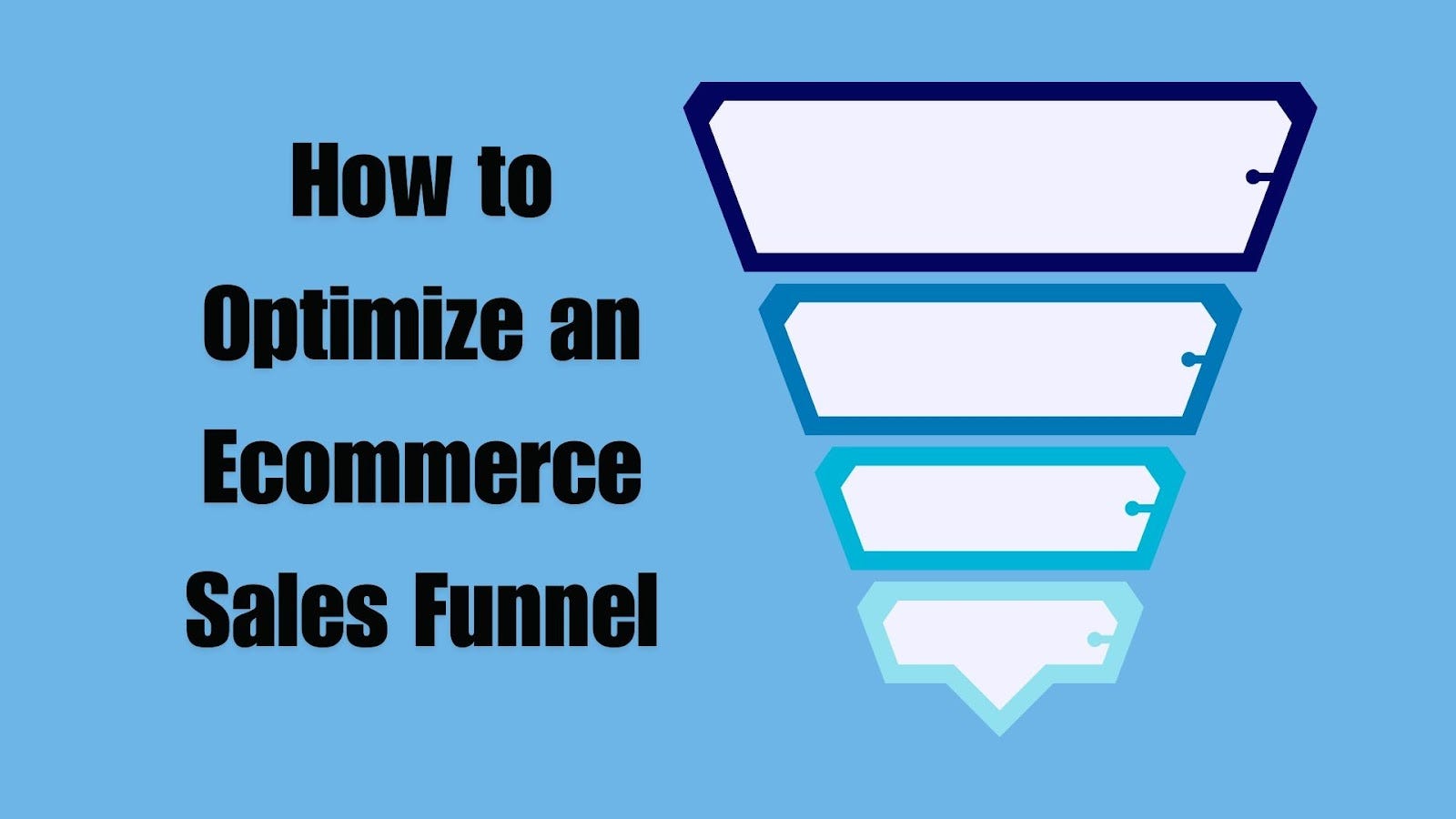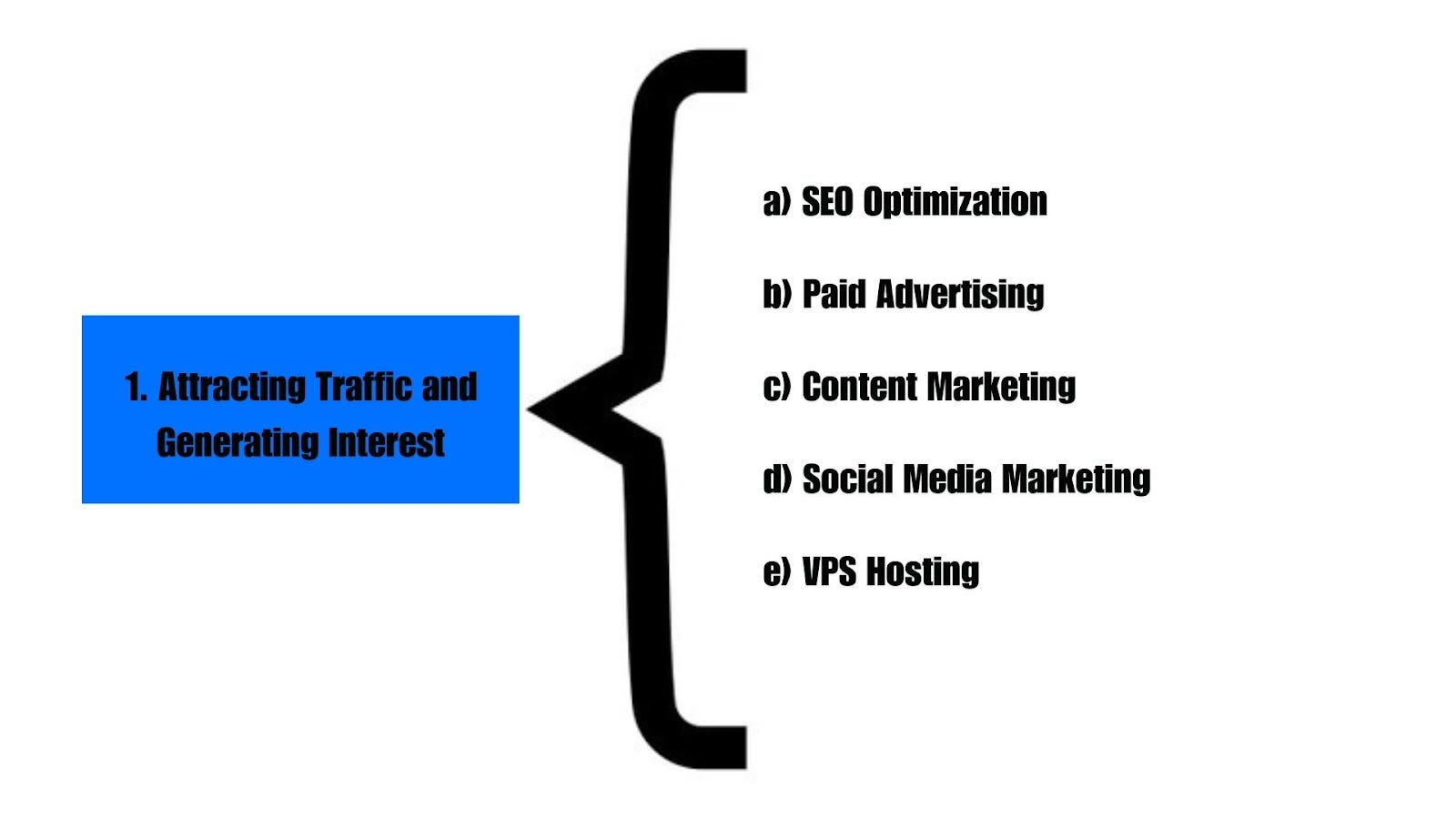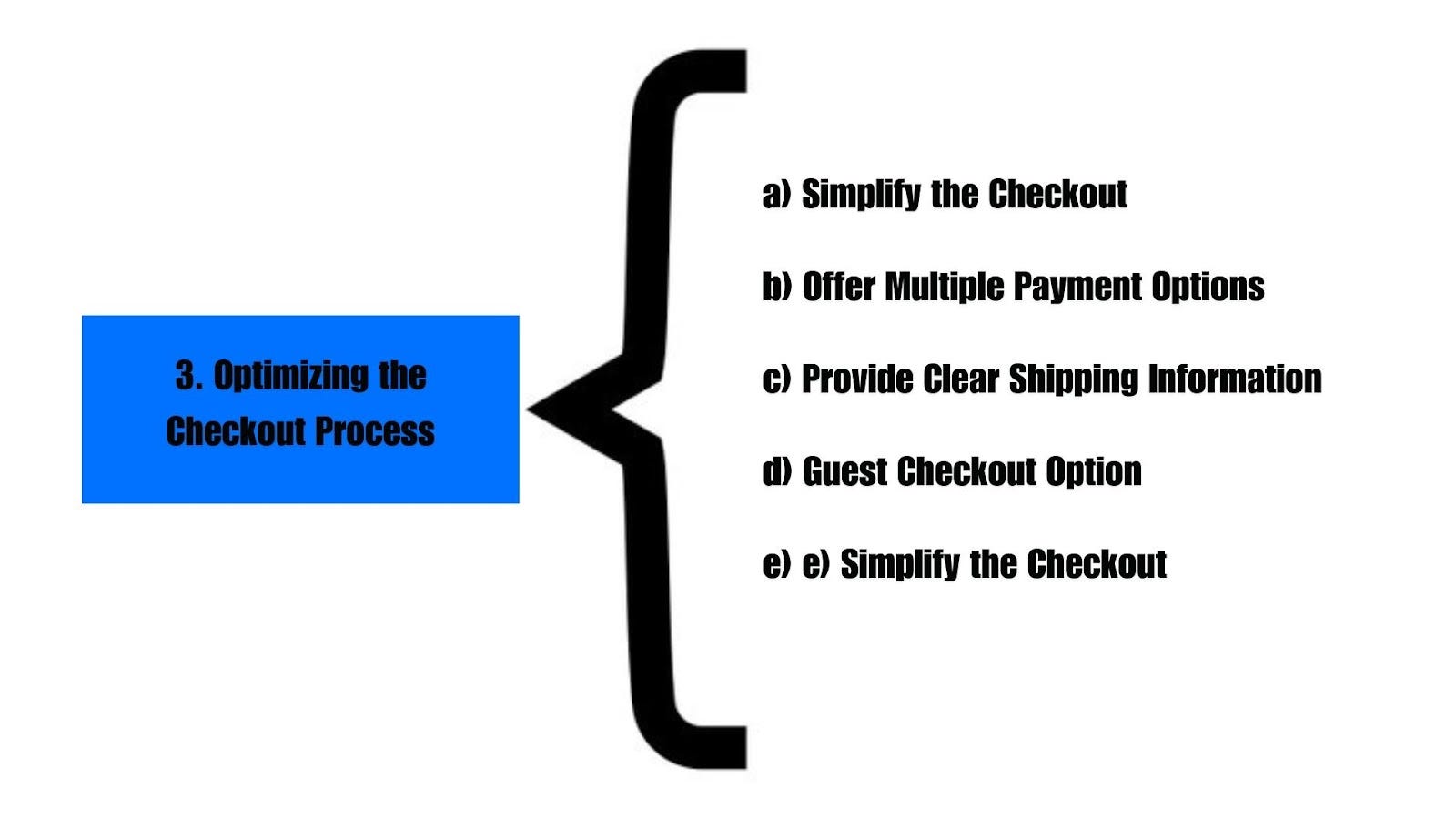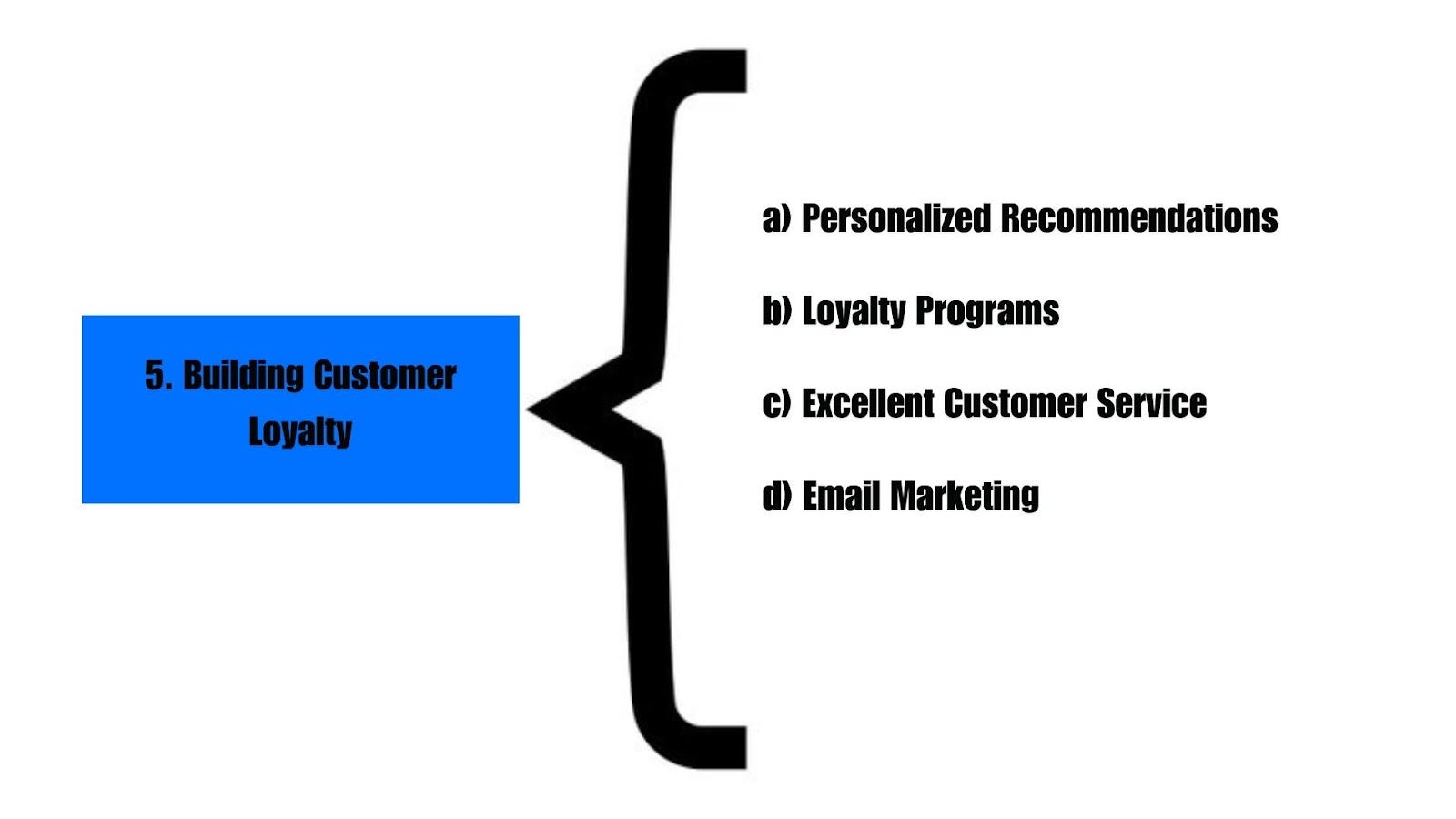In the dynamic world of ecommerce, a well-optimized sales funnel can be the difference between soaring conversions and untapped potential. As an online business owner, mastering the art of funnel optimization is a surefire way to drive revenue and cultivate loyal customers.
Dive into this comprehensive guide and uncover the strategies that will transform your ecommerce sales funnel into a powerful engine for growth.
What is the Sales Funnel
The sales funnel is a model that represents the customer journey from initial awareness of a product or service to the final conversion or purchase. It is typically depicted as a funnel shape, with the widest part at the top representing the initial stage of the customer journey, and the narrowest part at the bottom representing the final stage of the sales process.
The key stages of the sales funnel are:
- Awareness: Attracting potential customers through various marketing channels.
- Interest: Engaging visitors and nurturing their interest in your products.
- Desire: Building a strong desire for your products and establishing trust.
- Action: Converting visitors into customers through a seamless checkout process.
- Retention: Encouraging repeat purchases and building customer loyalty.
How to Optimize an Ecommerce Sales Funnel?
1. Attracting Traffic and Generating Interest
The top of the sales funnel is all about capturing the attention of potential customers and piquing their interest in your ecommerce offerings. This is where you need to cast a wide net and make your brand and products visible to the right audience.
a) SEO Optimization
Imagine your ecommerce website as a hidden gem, waiting to be discovered by eager shoppers. SEO optimization is the key that unlocks this treasure trove of potential customers. By strategically incorporating relevant keywords and crafting high-quality, informative content, you can climb the search engine rankings and ensure your virtual storefront is the first to catch the eye of those searching for your products or services. It's like planting breadcrumbs that lead the way straight to your digital doorstep.
b) Paid Advertising
Sometimes, you need to be a bit more proactive in reeling in new customers. That's where paid advertising comes into play. Platforms like Google Ads and social media networks allow you to cast a targeted net, reaching potential customers who align with your specific buyer personas. Imagine your ads as a beacon in the digital landscape, beckoning shoppers to explore your ecommerce offerings and take the next step in their purchasing journey.
c) Content Marketing
In the attention-scarce world of ecommerce, creating valuable, engaging content is akin to unfurling a captivating narrative that draws visitors in. Blogs, articles, and videos that offer genuine insights, solve customer pain points, or simply entertain, become powerful tools to attract and retain potential buyers. Think of this content as a virtual storefront window, displaying your expertise and enticing passersby to step inside and learn more.
d) Social Media Marketing
Picture your ecommerce business as a socialite, mingling and networking within the vibrant communities of social media. By cultivating a strong social media presence, you can increase brand awareness, foster connections, and spark conversations that resonate with your target audience. It's like hosting a virtual cocktail party, where potential customers can get a glimpse of your brand's personality and decide to join the celebration.
e) VPS Hosting
Your ecommerce website is like a big, fancy building. Just like that building needs a strong foundation to hold it up, your website needs a solid hosting solution to support it. This is where VPS (Virtual Private Server) hosting comes in.
VPS hosting is the sturdy base that supports your whole ecommerce business. It makes sure your website can handle lots of visitors at once, without getting slow or crashing. This is important for all the ways you're trying to attract customers, like search engine optimization, ads, content marketing, and social media.
With a Cheap Linux VPS, your website will load fast and stay online. It also keeps your customers' information secure. Plus, you can customize the hosting to fit your specific business needs. So, if you want to attract traffic and generate interest, try to look for the best VPS Hosting providers.
2. Enhancing Product Pages
Imagine your ecommerce store as a high-end showroom, where every product is meticulously displayed to entice and delight potential customers. The foundation of this virtual showroom lies in the quality of your product imagery.
a) High-Quality Images
Just as a physical showroom uses carefully curated displays to showcase the best features of each product, your ecommerce site must do the same with its visuals. High-quality, professionally shot product images are akin to a personal greeter, welcoming visitors and inviting them to take a closer look. These visuals should be clear, well-lit, and capture the product from multiple angles, allowing customers to visualize the item as if they were holding it in their hands. It's a digital red carpet, leading the way to a deeper exploration of your offerings.
b) Detailed Descriptions
While the visuals captivate the senses, the product descriptions are the storytellers that bring each item to life. Comprehensive, well-written descriptions are like a personal guide, providing customers with a thorough understanding of the product's features, materials, dimensions, and any other relevant details. It's as if the product is speaking directly to the customer, showcasing its unique qualities and making a compelling case for why it deserves a place in their virtual shopping cart.
c) Customer Reviews
In the ecommerce world, where trust is paramount, customer reviews are the digital equivalent of word-of-mouth recommendations. Prominently displaying positive reviews on your product pages is akin to having a chorus of satisfied customers vouching for the quality and value of your offerings. It's like having a team of enthusiastic brand ambassadors, sharing their genuine experiences and giving potential buyers the confidence to take the plunge and make a purchase.
d) Clear Calls-to-Action (CTAs)
Just as a skilled salesperson in a physical showroom would gently nudge customers towards the checkout, your ecommerce site must have clear and compelling calls-to-action (CTAs) to guide visitors through the final steps of the sales funnel. These CTAs, such as "Add to Cart" or "Buy Now," should be strategically placed, visually appealing, and create a sense of urgency, encouraging customers to take immediate action. They're the virtual red carpet that leads directly to the checkout counter, making the path to purchase as seamless and inviting as possible.
3. Optimizing the Checkout Process
Imagine your ecommerce store as a high-end boutique, where the checkout process is the grand finale of the shopping experience. Just as a skilled salesperson would ensure a smooth and enjoyable transaction in a physical store, your online checkout should be a streamlined and hassle-free journey for your customers.
a) Simplify the Checkout
Envision the checkout process as a graceful dance, where each step is carefully choreographed to ensure a seamless flow. By reducing the number of steps and required fields, you're creating a nimble routine that allows customers to glide through the final stages of their purchase. It's as if you're guiding them by the hand, leading them confidently towards the finish line without any unnecessary stumbles or missteps.
b) Offer Multiple Payment Options
Just as a symphony orchestra requires a variety of instruments to create a harmonious melody, your ecommerce checkout should offer a diverse array of payment options to accommodate the unique preferences of your customers. Imagine your checkout as a grand stage, where customers can choose their preferred "instrument" --- whether it's a credit card, digital wallet, or alternative payment method --- and seamlessly complete their transaction. It's a symphony of convenience, where every customer can find their perfect note.
c) Provide Clear Shipping Information
In the world of ecommerce, the journey doesn't end at the checkout --- it continues with the delivery of the purchased goods. Your checkout process should clearly communicate the shipping costs and timelines, like a trustworthy courier service laying out the details of the package's journey. This transparency instills confidence in your customers, allowing them to plan accordingly and eagerly anticipate the arrival of their purchases, much like tracking a highly anticipated package.
d) Guest Checkout Option
Imagine your ecommerce store as a high-end event, where some customers prefer to make a discreet and expedited exit. The guest checkout option is akin to a VIP express lane, allowing these customers to bypass the formalities of account creation and swiftly complete their transaction. It's a special privilege that caters to the unique needs of those who value speed and convenience above all else, ensuring they leave your digital storefront with a lasting positive impression.
e) Simplify the Checkout
Offer Multiple Payment Options: Accommodate various payment preferences.
Provide Clear Shipping Information: Clearly communicate shipping costs and timelines.
Guest Checkout Option: Allow customers to purchase without creating an account.
4. Reducing Cart Abandonment
In the dynamic world of ecommerce, the final hurdle to overcome is the dreaded cart abandonment phenomenon. Imagine your online store as an elegant ballroom, where potential customers have wandered in, admired the wares, and even added items to their virtual shopping carts, only to unexpectedly slip away before completing the transaction. It's like watching a prized dance partner leave the floor mid-waltz, leaving you yearning to bring them back and guide them to the grand finale.
a) Offer Incentives
To entice those who have strayed, you must offer incentives that are as alluring as a maestro's serenade. Discounts, free shipping, or other tempting offers are akin to a VIP invitation, beckoning the customers to return and complete their purchase. It's as if you're extending a hand and whispering, "The dance is not over yet --- let me show you the true magic that awaits." These incentives create a sense of urgency and value, drawing the customers back into the elegance of your ecommerce ballroom.
b) Remind Abandoned Carts
Just as a skilled performer might encore after a rapturous applause, your ecommerce store must persistently remind the customers who have abandoned their carts to come back and finish the show. Automated email reminders are the digital equivalent of a heartfelt encore, gently nudging the customers and reminding them of the items they've left behind. These messages should strike the perfect balance of personalization and persuasion, enticing the customers to pick up where they left off and complete their journey through the sales funnel.
c) Clear and Prominent CTAs
Imagine your ecommerce store as a grand stage, where the path to the final act is illuminated by clear and prominent calls-to-action (CTAs). These CTAs, such as "Proceed to Checkout" or "Complete Your Purchase," are the digital spotlights, beckoning the customers to take the next step with confidence and ease. They are the beacons that guide the customers through the final steps of the transaction, ensuring that the journey from browsing to buying is as seamless and inviting as possible.
5. Building Customer Loyalty
Imagine your ecommerce store as a grand estate, where your customers are not just passing visitors, but cherished guests who have been welcomed into your digital world. In this realm, the goal is to transform these one-time shoppers into loyal patrons, creating a mutually beneficial relationship that extends far beyond a single transaction.
a) Personalized Recommendations
Picture your ecommerce store as a seasoned butler, intimately familiar with the preferences and habits of each guest. Through the power of data-driven personalization, you can offer tailored product recommendations that feel like a thoughtful suggestion from a trusted confidant. It's as if the butler has discreetly observed your browsing history and personal interests, and now presents you with a curated selection of items that perfectly complement your style and needs. This personalized touch creates a sense of exclusivity and value, fostering a deeper connection between the customer and your ecommerce brand.
b) Loyalty Programs
Envision your ecommerce store as a members-only club, where loyal customers are granted special privileges and exclusive benefits. Loyalty programs, akin to a VIP rewards system, offer points, discounts, or other incentives to encourage repeat business and foster a sense of belonging. It's as if the butler is personally escorting these faithful guests to the front of the line, providing them with a heightened level of service and recognition. These programs transform one-time visitors into devoted brand ambassadors, who eagerly await their next opportunity to engage with your ecommerce estate.
c) Excellent Customer Service
In the world of ecommerce, customer service is the equivalent of impeccable hospitality. Imagine your ecommerce store as a grand manor, where each interaction with a customer is a chance to showcase your unwavering commitment to their satisfaction. Prompt and helpful support, akin to a gracious host anticipating and addressing every need, creates a lasting impression and instills a sense of trust and confidence in your brand. Customers who receive this level of care and attention will not only return to your digital doors but also become ardent advocates, spreading the word about the exceptional experience they've had within your ecommerce estate.
d) Email Marketing
Envision your ecommerce store as a stately home, where the doors are always open, and the residents are eager to share the latest news and updates. Email marketing is the digital equivalent of a regular newsletter, keeping your loyal customers informed and engaged with your brand. Whether it's highlighting new product launches, sharing exclusive content, or offering tempting promotions, these communications are like personal invitations, drawing your customers deeper into the fold and strengthening the bond between them and your ecommerce estate.
Key Metrics to Track
To measure the effectiveness of your optimization efforts, monitor the following metrics:
- Conversion rate
- Average order value (AOV)
- Cart abandonment rate
- Customer lifetime value (CLTV)
- Bounce rate
- Time on site
Conclusion
By implementing these steps to optimize your ecommerce sales funnel, you'll be well on your way to increasing your conversion rates, boosting customer loyalty, and driving sustainable growth for your online business.





